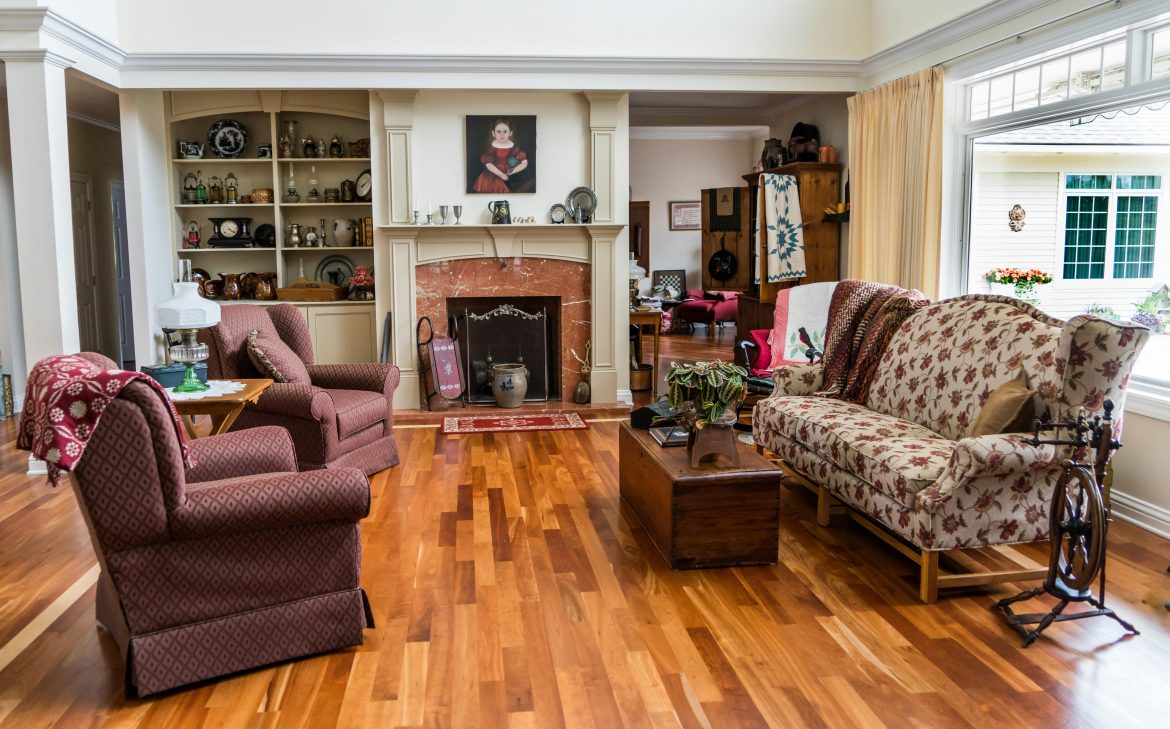Decorating trends may come and go, but the way our parents and grandparents approached the home never seems to fall out of favour for long. Their interiors—often shaped by limited resources and a sharp eye for quality—were never about keeping up with trends. Instead, they prioritised authenticity, personal style, and a sense of comfort that many modern schemes still try to emulate.
If you’ve ever walked into your grandmother’s sitting room and admired its calm, collected atmosphere—or noticed how your parents’ home feels lived-in without being cluttered—there’s a good chance you’ve already been influenced by their decorating habits. As today’s interiors become more nostalgic and character-driven, there’s no better time to revisit these long-standing design principles that have quietly stood the test of time.
Here are the classic decorating lessons we should all be borrowing from older generations.
ALSO SEE: How to decorate a fireplace mantle in 7 easy steps
Let your home reflect who you are
Before social media and endless inspiration boards, our parents and grandparents relied on instinct, taste, and sentimentality to guide their decorating choices. This often meant filling rooms with collected treasures, handmade pieces, and keepsakes from travels or important life events.
The result? Homes with real personality—spaces that tell stories. This idea of collecting what you love and allowing your home to evolve over time is back in vogue, especially as more people seek interiors that feel unique rather than showroom-perfect. Curating meaningful items rather than buying into fleeting trends leads to spaces that age gracefully and continue to feel relevant.
Stick with the classics
Older generations had a knack for recognising which elements would stand the test of time. While some design fads faded, certain choices—like classic wallpaper, quality wooden furniture, and well-made textiles—never went out of style.
A subtle striped wallpaper in a hallway, a floral motif in a bedroom, or even a chintz armchair can add warmth and a sense of continuity to a home. These timeless touches work because they bring comfort and familiarity, grounding a room in tradition while still offering room to play with modern touches elsewhere.
Switch with the seasons
Rather than overhauling an entire room every year, previous generations understood how to make small changes that made a big impact. Seasonal updates—like changing cushion covers, swapping heavy curtains for sheers, or dressing furniture in light slipcovers during warmer months—kept the home feeling fresh without excessive spending or waste.
This approach is not only practical but sustainable. It encourages homeowners to get more out of what they already have, while also making a home feel in tune with nature and the seasons. It’s a gentle rhythm that adds interest and movement to interiors throughout the year.
Prioritise quality over quantity
It wasn’t unusual for our grandparents to save up for a single well-crafted piece of furniture instead of buying several cheaper alternatives. This slower, more considered way of decorating championed quality and longevity—a principle that’s making a comeback in an era of mass production and fast furniture.
A focus on craftsmanship and heritage pieces ensures that your home has depth. A single inherited sideboard or a lovingly restored dining table often holds far more charm than a room full of brand-new pieces. These items are also a reminder that sustainability and beauty often go hand in hand.
Blend the old with the new
While traditional interiors have their place, one of the best lessons from past generations is how to seamlessly mix styles. Many family homes featured antique frames next to modern photos, mid-century chairs beneath contemporary art, and inherited pieces styled with newer finds.
This layered look feels natural and lived-in because it’s built over time. Today, this approach is often referred to as “eclectic” or “curated”—but the truth is, it’s been practised for decades. The key is to keep the balance personal, not perfect. Let your home grow with you, just as your parents and grandparents let theirs evolve with each passing decade.
The wisdom of a well-loved home
In the end, our parents and grandparents weren’t just decorating—they were building spaces to live, love, and grow in. Their interiors weren’t always trend-led or professionally designed, but they were thoughtful and deeply personal. By adopting their values of authenticity, care, and individuality, we can create homes that don’t just look beautiful but feel right too.
As we move further into a design era that values character and comfort over clinical perfection, their timeless wisdom feels more relevant than ever.
ALSO SEE:
How to add privacy to your home on a budget: easy and affordable solutions that work
Featured Image: Pexels

